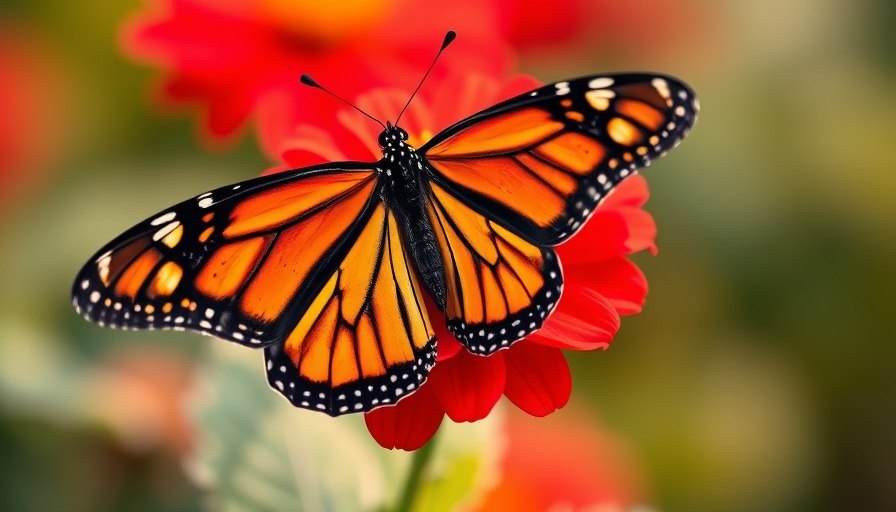
Understanding the Crisis: The Decline of Western Monarch Butterflies
The recent peer-reviewed study confirming the link between pesticide use and the mass die-off of Western monarch butterflies has sent shockwaves throughout the scientific and environmental communities. Not long ago, hundreds of these beautiful creatures were found dead or dying near the Pacific Grove Monarch Sanctuary, a critical habitat for overwintering butterflies. In January 2024, these alarming findings prompted urgent research into the causes of their sudden decline, ultimately revealing that lethal doses of pesticides were the likely culprits.
The Role of Pesticides in Butterfly Mortality
Researchers utilized liquid and gas chromatography, along with mass spectrometry, to reveal an unsettling truth: each tested butterfly contained, on average, seven different pesticides. Notably, pyrethroid insecticides—namely bifenthrin, cypermethrin, and permethrin—were present in quantities sufficient to cause death. Staci Cibotti, the lead author of the study and a pesticide risk prevention specialist at the Xerces Society for Invertebrate Conservation, reinforced the gravity of these findings, stating, “Each monarch had, on average, 7 different pesticides, many at lethal doses.” This raises a critical question for homebuyers and property investors: How might gardening and landscaping practices affect these charming pollinators in your area?
Environmental Impact and the Future of Monarch Butterflies
As one of the most ecologically significant insects, the Western monarch butterfly populations have plunged by nearly 95% since the 1980s. The U.S. Fish and Wildlife Service indicates there is a staggering 99% chance that these butterflies could become extinct by 2080 without immediate intervention. This crisis not only threatens the butterflies but also the broader ecosystem that relies on them.
What Homebuyers Can Do: Sustainable Practices
For potential homeowners, sellers, and investors in regions like Dumfries, embracing sustainable landscaping and gardening techniques can make a positive impact. Consider native plants in your garden that not only attract monarchs but also support broader biodiversity. Avoid using harmful pesticides and instead opt for organic alternatives or integrated pest management methods. Not only does this approach promote sustainability, but it can also enhance the aesthetic of your property, elevating its appeal in a competitive market.
The Importance of Community Awareness
Addressing the crisis of Western monarch butterflies requires a community effort. Educating the public about the harmful effects of pesticide use is crucial. Homebuyers can become advocates for responsible gardening within their neighborhoods while owners can consider joining or starting community initiatives aimed at conservation. Such actions cultivate a culture of sustainability, making eco-friendly practices a priority across the community.
Final Thoughts: A Call for Action
As the effects of pesticides on Western monarch butterflies become more evident, we must remain vigilant in protecting these irreplaceable creatures. They are not just insects; they symbolize the broader health of our environment. By adopting sustainable practices and promoting awareness, we can play our part in ensuring these butterflies thrive for generations to come. Let's create communities that celebrate biodiversity and act responsibly. Every small change can lead to a larger impact.
 Add Row
Add Row  Add
Add 





Write A Comment